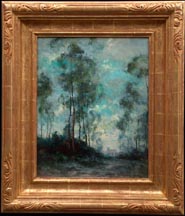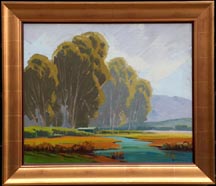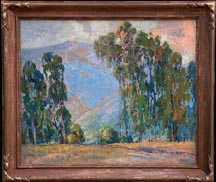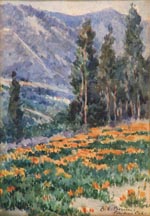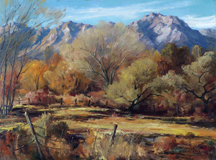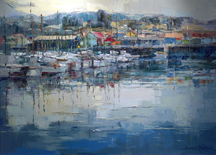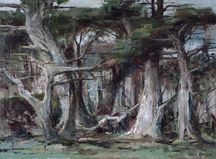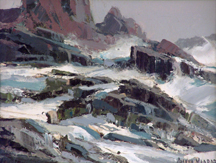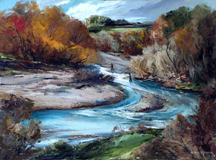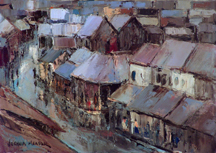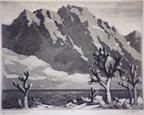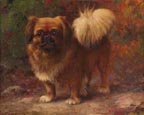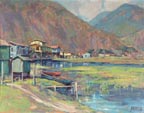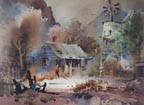Homepage | Contact Us | Our Location
| A-B | C-D | E-G | H-He | Hi-J | K-M | N-P | Q-S | T-Z |
California/American School | Alpha Listings of Artists | Recent Acquisitions
Watercolors | Farm Scenes | Coastal | Deserts | Mountains | National Parks | Still Life & Portraits
Previous issues: October | September | August | July | June | May | Apri
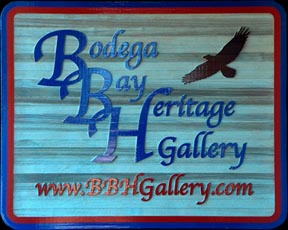 |
Bodega Bay Heritage Gallery Monthly
November 2007 News, Articles, and Opinions
from the world of California’s Heritage Art
1580 Eastshore Road, Suite K, PO Box 325
Bodega Bay, CA 94923, 707-875-2911 (map)
email: BBHGallery@BodegaBayHeritageGallery.com
www.BodegaBayHeritageGallery.com
|
In this issue:
- California Impressionists of the Southland and notes about the "Eucalyptus School"
- Report of The Landscapes of Joshua Meador Exhibit: HELD OVER through Friday, Nov 11
-MUSEUM EXHIBITION AT ST. MARY'S: Footloose in Arcadia: 1890 to 1930
- Linked List of museum exhibits relating to Early California Art
- Upcoming gallery exhibition: The California Desert Painters
- "Recently acquired" since our last issue
|
* * * * *
Gallery Exhibit, beginning Friday, November 16
California Impressionists of the Southland
"The Shimmering Visions of Dedrick Brandes Stuber 1878-1954
and Richard Dey DeRibcowsky 1880-1936"
with additional works by Arthur Merton Hazard, Gustave Adolph Magnussen, Sam Hyde Harris,
Anna Hills and others, including examples of the "Eucalyptus School" pictured below
California Impressionists of the Southland and the "Eucalyptus School"
Early in the 20th century, southern California "impressionist" painters began using the tall eucalyptus trees as subjects of their work. These tall, fast-growing Australian trees were brought to California to be grown for railroad ties, but ended up as a dominating feature of the California landscape. The qualities of Southern California air and light, added to these gracefully high reaching trees, against hazy mountains, gave rise to the Eucalyptus School, a type and style of painting which today is termed by some as "California Impressionist."
The terms "Impressionist" and "Post Impressionist" are terms used to describe 19th century avant-garde movements in French painting, whose members experimented with ways of capturing light on canvas. Since then, and to the dismay of some art critics, these terms have been borrowed by some and stretched loosely to include a style of 20th century paintings done in Southern California. The style used in these California paintings should be of no surprise, as many Southern California artists were schooled in Europe or had come to California from Europe.
These "California impressionist" paintings for the most part excluded humans, wildlife, and architecture, and featured these trees in the Southern California light. Because the mountains of Southern California were geographically different from the landscapes of Europe, and the Australian Eucalyptus were unlike any European trees, these paintings of the "Eucalyptus School" are dissimilar to European impressionist paintings.
How was Southern California light different? Part of the Southern California light was caused by the geography of the Los Angeles basin, where cooler air is trapped by warmer moist air above, and held in by the local mountain ranges. Way back in 1542, the Spanish explorer Cabrillo observed that smoke rising from an Indian campfire at San Pedro Harbor rose a few hundred feet and then flattened out. Long before the the term "smog" arrived, this inversion layer caused a diffused sunlight. The resulting atmospherics proved to be qualitatively and artistically different from sunlight in other regions.
Today, our attitude toward eucalyptus trees has changed. Botanists view them as invasive exotic weeds responsible for crowding out native plant species while fire fighting professionals curse the day of their arrival because they supply a severe fire hazard. But a hundred years ago, these Australian giants were admired for their beauty, their dazzlingly tall, gracefully swaying, and sweetly scented majesty. Its no wonder artists wanted to paint them against the backdrop of hazy and colorful California hills. Whether painted in the muted colors of diffused Southern California sunlight or in silhouette, these trees became symbolic of California's wonder, and they have become the featured subject of some marvelous California painting, even to the point of becoming called "the Eucalyptus School" of painting.
The Eucalyptus school wasn't without its critics, many with European bias, some harshly calling it decor art. Yet a number of its painters developed and achieved their distinctive styles as members of this school, such as Benjamin Chambers Brown, Sam Hyde Harris, Franz Bishoff, Paul Lauritz, Anna Hills, Edgar Payne, Adolph Magnussen, Hanson Puthuff, Jack Wilkinson Smith, Florence Upson Young, Arthur Merton Hazard and Maurice Braun.
* * * * *
Gallery Exhibit: HELD OVER through Friday, November 11
Linda and I are pleased to report quite a swell of enthusiasm for the works of Joshua Meador. We advertised in the San Francisco Chronicle and the Santa Rosa Press Democrat, and quite a number of people made the trek to Bodega Bay. Some brought along their Meador paintings, bought long ago from the artist in either Carmel or in Caspar. Seven of those privately-owned paintings were graciously loaned to the gallery for the duration of the exhibit.
Most visitors began their visit by viewing "Four Men Paint One Tree," a seventeen minute short film originally aired on Walt Disney's television show in 1958. In this film, four of Disney's "now famed" artists, Marc Davis, Eyvind Earle, Walt Peregoy, and Joshua Meador go out to paint a live oak tree. Walt Disney narrates and emphasizes the film's message, which he reads from a book by artist Robert Henri, that all artists should not try to paint in someone else's style, but rather paint according to their own vision and artistic sensibilities.
Disney first shows the four artists at work collaborating on the Disney feature film, "Sleeping Beauty," with one style and goal. But then, he contrasts their collaborative studio work with what Disney terms a "busman's holiday," when all four artists go out to paint a Live Oak, listening only to their internal artistic voice. The artists, now "being themselves," explain how they are painting the tree and demonstrate their techniques.
In his gentlemanly Mississippian accent, Josh tells us how he envisions the tree dominating its background, and how he appreciates how the ancient Druids believed trees were inhabited by spirits. He explains how he begins his work outlining quickly with a broad brush dripping with black paint mixed with lighter fluid "because it dries fast," to his masterful use of mixing color on the canvas with his palette knives "to create movement." Once viewers have listened to Josh explain his painting and watch him as his painting evolves, they then are able to study Josh's paintings in the exhibit with a renewed vision, and to marvel at details of his technique they would not have noticed earlier.
Above and below are some of the paintings now on loan to our exhibit. One of the most echoed comments by visitors to the exhibit is that it had been enlightening to see such a wide variety of his compositions. In each painting, Josh seems to be saying something new and interesting, as he brings the subjects of his landscapes to life.
* * * * *
MUSEUM EXHIBITION AT ST. MARY'S: November 3 – December 16, 2007
Footloose in Arcadia: Artists and Authors of Piedmont, 1890 to 1930
This week begins the exhibition of the cultural history of Piedmont, California, by the Hearst Art Gallery at St. Mary's College in Moraga, California, partnering with the City of Piedmont. http://www.stmarys-ca.edu/arts/hearst-art-gallery/current-exhibits/index.html The exhibit includes painters but also writers - particularly Jack London - and other aspects of the City's cultural life, such as influential architecture. William Keith and Xavier Martinez are well-known and important Early California artists included in the exhibition as early members of "the crowd," as are later arrivals Gordon Coutts and Chris Jorgensen. (Bodega Bay Heritage Gallery specializes in the works of
Gordon Coutts.) The exhibit provides an opportunity to examine memorable paintings not only by them, but additional artists. The exhibit also provides interesting and valuable insights into the far different landscape and bohemian lifestyle of what can be called a Western Arcadia. The essay by Ann Swift is definitely worth reading.
The Hearst Art Gallery's presentations in the Early California Art subject matters are always excellent, with catalogues that are worth acquiring whether or not you can attend the exhibit in person. Their William Keith collection is of course not to be missed, although the works on view at any particular time are subject to change among their vast holdings. To purchase a catalogue for this Piedmont show or their recent show on Manuel Valencia 1856-1935, contact their shop or Heidi Donner by email (see information in the link).
* * * * *
* * * * *
| Upcoming Gallery Exhibition in January and February '08 |
The California Desert Painters
featuring the works of John W. Hilton
with works by James Swinnerton, Dedrick Stuber, Paul Grimm,
Orpha Klinker, Victor Clyde Forsythe, Paul Lauritz,
Carl Sammons, & Florence Upson Young
to the
right: John W. Hilton "Fall in the Canyon"
Painted in Hellhole Canyon, Anza Borrego State Park, CA
Oil on canvas, 18 x 24 |

John W. Hilton, Hellhole Canyon
|
* * * * *

